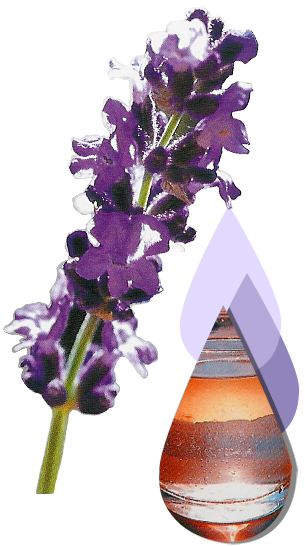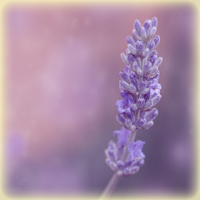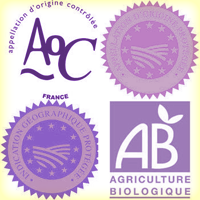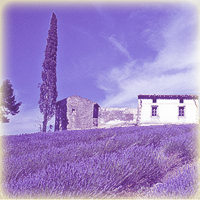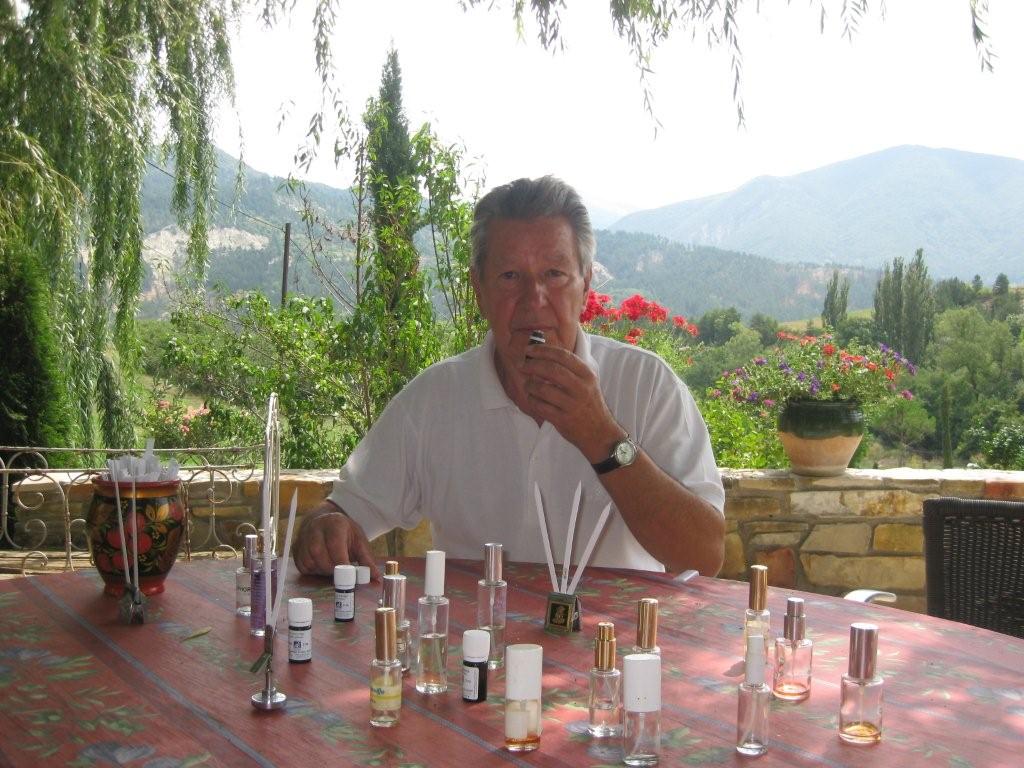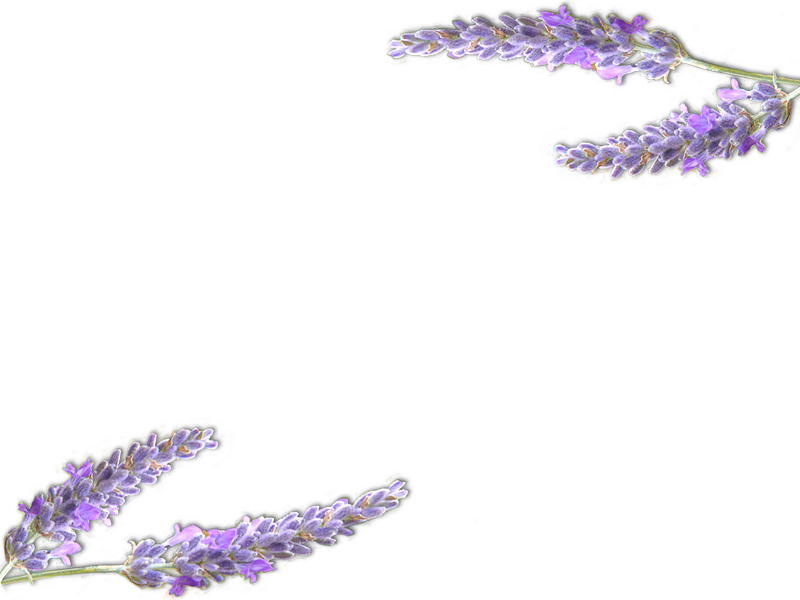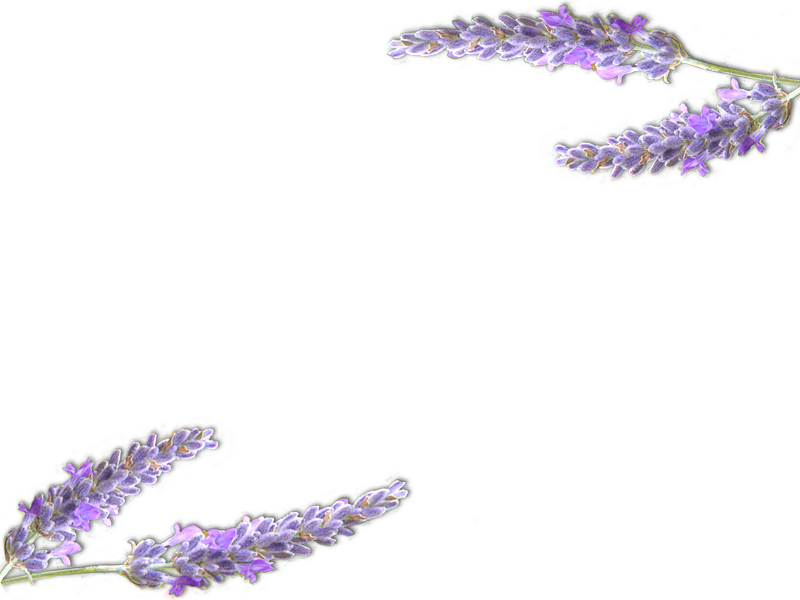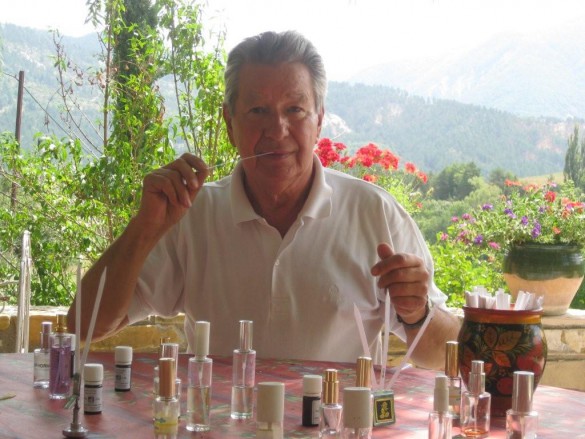Lavender
How beautiful were the flowered mountains of my childhood home in Barrême!
Beginning in July, the lavender fields started taking on color and – set in a wild patchwork of rectangles, triangles, and trapezoids – hues of lilac blue, light blue, mauve, pale violet, and blue violet emerged, changing with time and light of day, sunlight and, of course, their stage of growth as the season progressed.
Lavender grew wild everywhere: along roads, pathways and the edges of pine forests, in clearings, on north and south slopes, rocky outcrops, even in tiny ravines.
All the kids my age would rush off at daybreak with the excited enthusiasm of children, armed with sickles and sacks, to cut lavender.
It was a joy for us to carry our harvest on our backs down rocky paths under a leaden noonday sun and dump the bulging sacks into long piles on the distillery courtyard. Then at last, we’d toss down some cool water from the fountain.
Next came the pleasure of stuffing the lavender, alongside the men, into the stills, touching and breathing-in the precious essence which flowed warm, unctuous and sweet while the depleted stems blazed in the big boiler. An enormous bearded man tended the fire from morning to evening; shirtless, red skinned and perspiring, he poked his burning face close to the firebox and fed it with steamy branches and heavy pine logs to generate indispensable steam for the still.
Come evening, white smoke escaping from the towering red-brick chimney greeted the massive, creaking, horse drawn wagons as they returned from the fields loaded with the day’s cuttings. Both village and valley along the Asse river were blanketed in a veil of bluish smoke. How can I ever forget its aroma?
This aroma is found yet today by wandering along country roads and discovering a traditional distillery at work. The aroma is still intact and identical: an eternal fragrance of burned, dry plants, accompanied by a tinge of coumarin, blond tobacco, smooth acidity. The aroma is inimitable, recognizable as the unique odor of distilled lavender straw fires.
When someone asks me why and how I became a perfumer, I can only say it was perhaps to try capturing that delicious smoky fragrance from my childhood and to place it in a flask.
1963 – Antoine Chiris, The Essential Oil Department, love at first sight:
Yardley lavender blends, neroli (orange blossoms), petits grains (orange tree leaves), ylangs, lemons, mandarins, Boufarik roses, summer night’s dream, carnival of fragrance, the dizzy spell.
It was already the end of the great epoch.
There were always, of course, the Barrême lavenders, the top cut with its high linalyle acetate content, the lavenders of Lambruisse, Moriez, Sault, Sederon, and Nyons; however Bulgarian lavender, Russian clary sage, the lavandins, and the cloned “maillette” lavenders were arriving on the market.
In the space of twenty years, the lavender fields disappeared from the familiar Early Cretaceous Period countryside surrounding Barrême. The five Barrême distilleries, all dependent on merchant firms in Grasse, closed down one after another. Pine, genet, spinosa plum trees invaded the abandoned fields.
A strange disease set in which did not seem to interest the INRA very much, causing dieback of both wild and cultivated lavender plants.
Once planted, now uprooted.
But modes change; lavender became an iconic perfume of old gentlemen. Speculation, cheaper imported lavender, development of lavandin, higher yield cloned lavenders, a lost vision and an unfortunate drift towards other cosmetic products and the damaged image of lavender.
Nothing was going lavender’s way.
So the struggle was left up to the lavender producers who wouldn’t forsake their dry mountains. After many years in search of excellence for maintaining the fine lavender crops, they succeeded in imposing the concept of “AOC lavender". The label “lavender from Haute Provence AOC” is the only way to save the true or fine lavender and its cultivated lands
Perfume designers and the companies that employ them should, in their formulations and research, give priority to this concept and provide it with a much larger and more favorable place in their purchases.
Note that, under the name Barrême lavender, some catalogs offer mediocre quality and at prices that, it is true, are equally outrageous and suspect.
Lavender with the Haute Provence AOC label easily finds itself in a good position because it is still the essential, unavoidable element in eaux de toilette for men. AOC Lavender from Haute Provence represents southern France, Provence and the sun. It by itself is a perfume.
Slowly but surely, lavender is recovering its noble pedigree.
After the rain, the sun always shines.
Paris, March 30, 2009
RAYMOND CHAILLAN
*Addendum:
- Barrême: village in Haute Provence on the Napoleon Route
- Lambruisse, Moriez, Sault, Séderon, Nyons: villages in Haute-Provence
- INRA: National Agronomy Research Institute
- Antoine Chiris: One of the former top fragrance firms. Located in the city of Grasse, north of Cannes.
